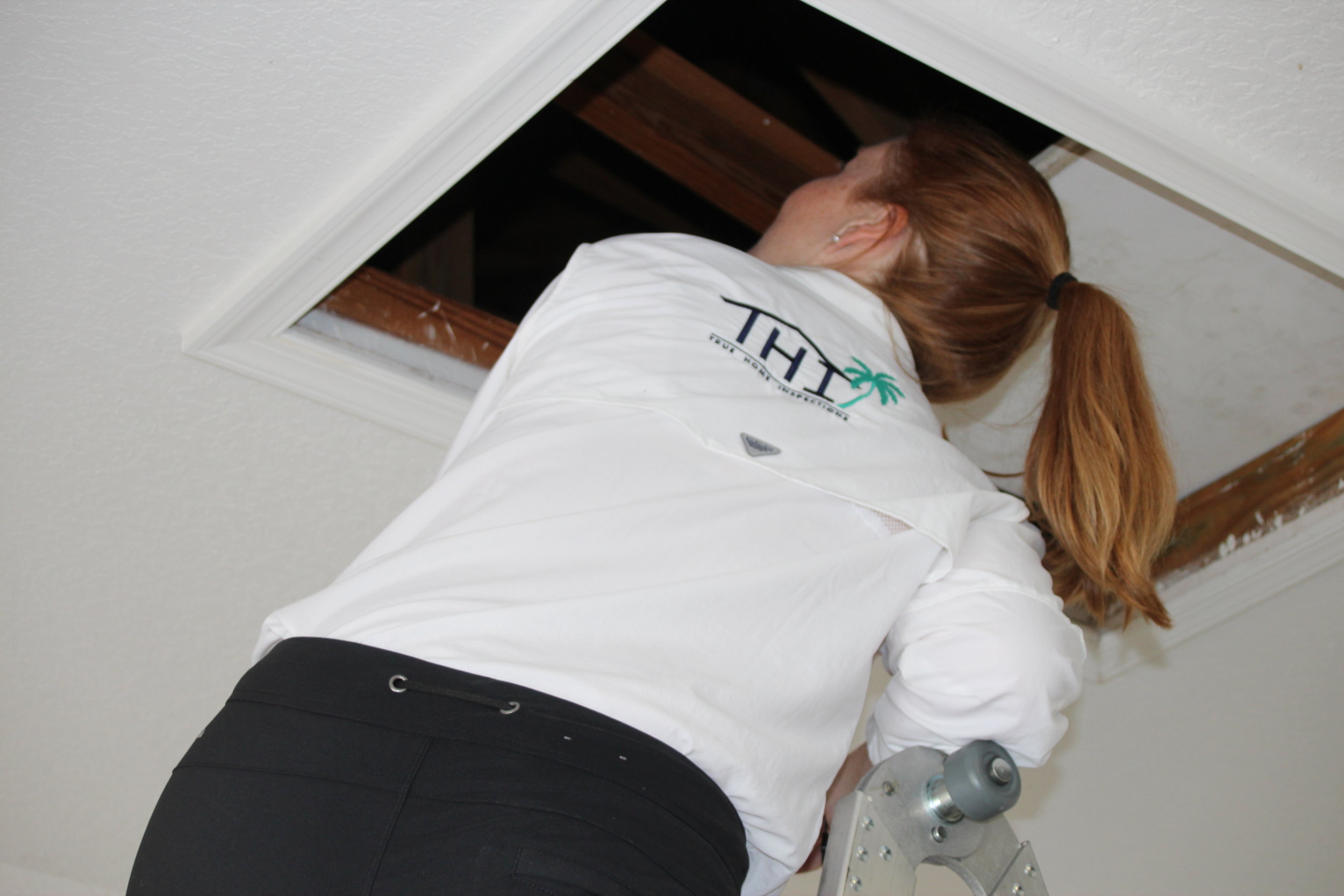WIND MITIGATION INSPECTIONS
While your insurance agent may call it a “wind mitigation” or “wind mit” it is officially known as the “Uniform Mitigation Verification Inspection Form, OIR-B1-1802.” The purpose of the form is to verify the hurricane-resistant structural features of your home so that you can receive discounts on the windstorm portion of your homeowner’s insurance.
Here are the things that comprise the inspection:
1. Roof Covering. Does the roof meet the 2001 Florida Building Code? Roofs installed starting in 2002 meet this criterion.
2. Roof Deck Attachment. How is the roof deck (typically plywood sheathing) attached to the trusses or rafters below?
3. Roof To Wall Attachment. How are the trusses or rafters attached to the wall below?
4. Roof Geometry. What shape is the roof? The best shape for hurricane resistance is a hip roof (roof sloped inward on all sides).
5. Secondary Water Resistance. Typically this would be a self-adhered modified bitumen roofing underlayment (such as Grace Ice and Water Shield) or a foam barrier. Secondary water resistance is not usually added in residential construction, but it does get you a nice discount.
6. Opening Protection. What type of hurricane shutters or impact-resistant windows, doors and garage door are installed in the home?
4 POINT INSURANCE INSPECTIONS
What is a four-point inspection? Insurance company statistics show that homes more than 15-20 years old have more claims than newer homes. Plus the claims are often due to a deteriorated condition of older building components. So, as a loss-prevention measure, many insurance companies now require an inspection of key home components of an older home before they will issue a policy--to see if they are in serviceable condition or have been replaced/upgraded since the home was built.
The age of the home at which a 4-point inspection is requested depends on the insurance carrier. More than 20-years old is the threshold for some companies, while others are more lenient and start at 30 or 40-years old, and some more stringent start at 10 years.
There are a few companies out there that will write insurance on an older home without a 4-point. But the policies are created primarily for short-term use for an unoccupied home under construction and are much more expensive, so being able to provide an underwriter a 4-point inspection report without any defects means you will save money.
The Four Points include:
1. roof
2. plumbing (including water heater)
3. electrical
4. heating/air conditioning system.
And if you own a manufactured home:
5. tie downs will be added to the report
The following are a list of items, but not limited to, that may prevent you from a satisfactory rating on your report:
1. A roof with any leaks at all, or an older roof, typically over 15-years old for a 3-tab asphalt shingle roof, for example. An estimated additional roof life of 5-years is the usual standard for a roof to be acceptable.
2. An electric panel with screw-in type fuses.
3. Newer 3-slot type electric receptacles connected to old wiring that does not have grounding.
4. A water heater with signs of active or previous leaks.
5. Lack of an installed heating system. Window a/c units or plug-in portable heaters are not considered “installed.”
6. Any evidence of plumbing leaks or other water intrusions in the home, even previous ones.
7. Older knob-and-tube wiring that’s still “live.” or uninsulated cloth wiring present.
8. Exposed, amateur electrical wiring, especially open electrical splices.
9. Deteriorated, damaged, or un-vented plumbing piping.
10. Deteriorated washing machine hoses or shut off valves.
11. The presence of Polybutylene plumbing pipes in the home. This is considered nearly uninsurable due to it’s higher than normal failure rate.
*Please note that the above mentioned deficiencies are just generalized examples.
If you have any questions or concerns about insurance inspections, please do not hesitate to call us! We are here to help!
ROOF CERTIFICATION INSPECTIONS
The failure of older roofs, with the resulting water damage and possibility of mold growth, is a significant source of claims for insurance companies. So your company may ask that you provide a roof inspection report, especially if the home is more than 20-years old. The report must verify that your roof is in good condition and has about 5 remaining years of life or more. Citizens Form “CIT RCF-1 09 12” is the industry-standard report format. The one-page report must be completed and signed by a Florida-licensed building or roofing contractor, architect, engineer, building code official, or home inspector. The following information is required, along with two photos of the roof:
• Type of roof material
• Age of roof
• Remaining useful life
• Date of last roofing permit
• Date of last update of roof
• If partially replaced, percentage of roof replaced
• Overall condition of roof (from excellent downward to poor)
• Any visible deterioration an/or damage
• Any visible signs of leaks



